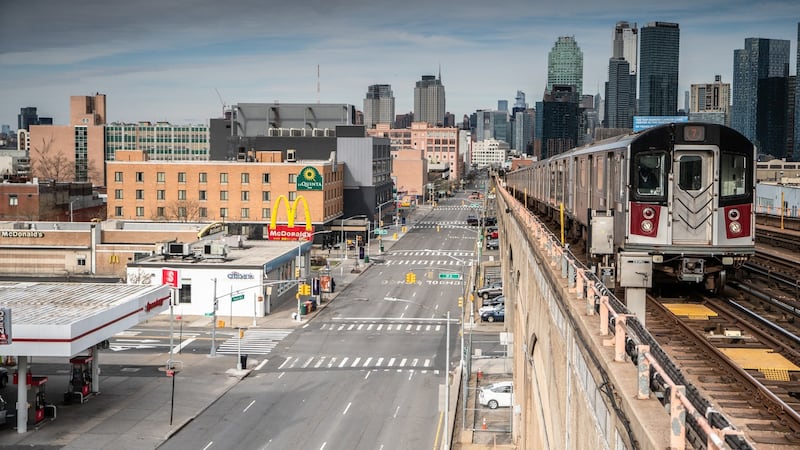Years ago, the night before the New York marathon, the great Norwegian long-distance runner Ingrid Kristiansen popped up doing an interview on a local news channel. The reporter was giving it loads of NYC hoopla, jabbing at the legendary former champion to give a word for the heroes, the thousands of have-a-go gals and guys in the non-elite categories, the fun-runners just looking to get around.
“Oh, I don’t call them fun-runners,” Kristiansen said with admirable Scandinavian coolness. “The guys at the front of the race are having fun. They will enjoy it because they will be running fast. I feel bad for the people who will be at the back. Running a slow marathon is not fun.”
Well indeed. Plenty of us found out the next day just how on the money the erstwhile world record holder was. As we carted our sorry asses in and out of all five boroughs - honestly, it felt like 15 - the overriding sense was of deep, demoralising endlessness. The hours passed as days, empires rose and fell, and somehow we were still plodding through The Bronx with our heads down.
Take a deep dive into any of the academic papers floating around and you'll find mention of societal restrictions that may have to be implemented on and off well into 2021
At one stage, my running partner for the day pleaded, "Tell me something to cheer me up." But even though a gorgeous October sun was shining a path for us all the way down Fifth Avenue to Central Park, sadly the best I could do for her was to point out that it would presumably get dark at some stage. So, y'know, this thing had to end eventually.
Yard of road in front of you
Ingrid Kristiansen is right. Running a slow marathon is really and truly not fun. But not because it’s slow and not because it’s a marathon. Mostly, it’s because when you’re in the middle of it, you have no proper macro sense of it. The numbers keep ticking by in miles and kilometres but they lose their meaning after a while. Your world is reduced to the yard of road in front of you and maybe, if you can will yourself into a bit of optimism, maybe the yard in front of that.
As the news hummed grimly along in the past week, slow marathon runners everywhere will have felt the stirrings and flashbacks, the PTSMD of it all. The coronavirus crisis weighs so heavily on the planet right now not just because of the twin threats to everyone’s health and to the world economy. It’s the apparent endlessness of it all that really brings the hammer down.
Nobody has a notion what sort of timescale we’re looking at here before we get back to normality. Take a deep dive into any of the academic papers floating around and you’ll find mention of societal restrictions that may have to be implemented on and off well into 2021. The school year has already ended in the north and in Britain so you’d imagine that’s on the cards here too. Maybe everyone goes back in September, maybe not.

For that matter, what does post-Covid normality even look like? When will we think it’s okay to shake hands again? Or to hug a friend you haven’t seen for a while? Or, yes, God bless us and save us all, when will it be okay to go out for a pint? Would you bet on three months? Six months? This time next year? Nobody knows. Or if they do, they’re not saying. Neither is good.
We're going to be so bored and so annoyed with it that we'll plead with each other for something to cheer us up
This is more or less exactly what it feels like around Mile 17 of a 4:50ish marathon. You’ve been diligent so far. You’ve generally done the things you’re supposed to. You’re keeping going, putting one foot in front of the other, drinking your water and turning whatever corners you come to. But all that’s done is get you into a state where you’re tired and grumpy and still so far from the finish line that you can’t imagine the end.
Pain and boredeom
The pain and boredom of a slow marathon is pitched at just a low enough level to be tolerable. When you’re in the middle of it, there’s no point stopping until you get to the end. Even if you decide to drop out, what are you going to do? You still have to walk back to the Start/Finish to get your stuff. So you shuffle on and on and ever on, until it ends and you swear never to let it happen again.
The awful secret every slow marathon runner comes across eventually is that it is actually possible to run a marathon. You can do it. You can run a long distance. You can physically transport your not-particularly-athletic body 26 miles and 365 yards. Not in an inspirational, heroic, push-your-limits-to-the-max kind of way. More as a literal, thoroughly funless, basic fact of human existence.
This is where we are headed with the coronavirus thing. Societies all across the globe are headed for months and maybe years of slow marathon running. We can do it. Ugh.
It’s going to be long and dull and not at all what we want to do with our lives. We’re going to be so bored and so annoyed with it that we’ll plead with each other for something to cheer us up. And the best we’ll come up with will be the onset of night. And a vague, unspecified certainty that there’ll come a time when we’ll be doing something else.
Miles to go on that one, though. Miles and miles.











